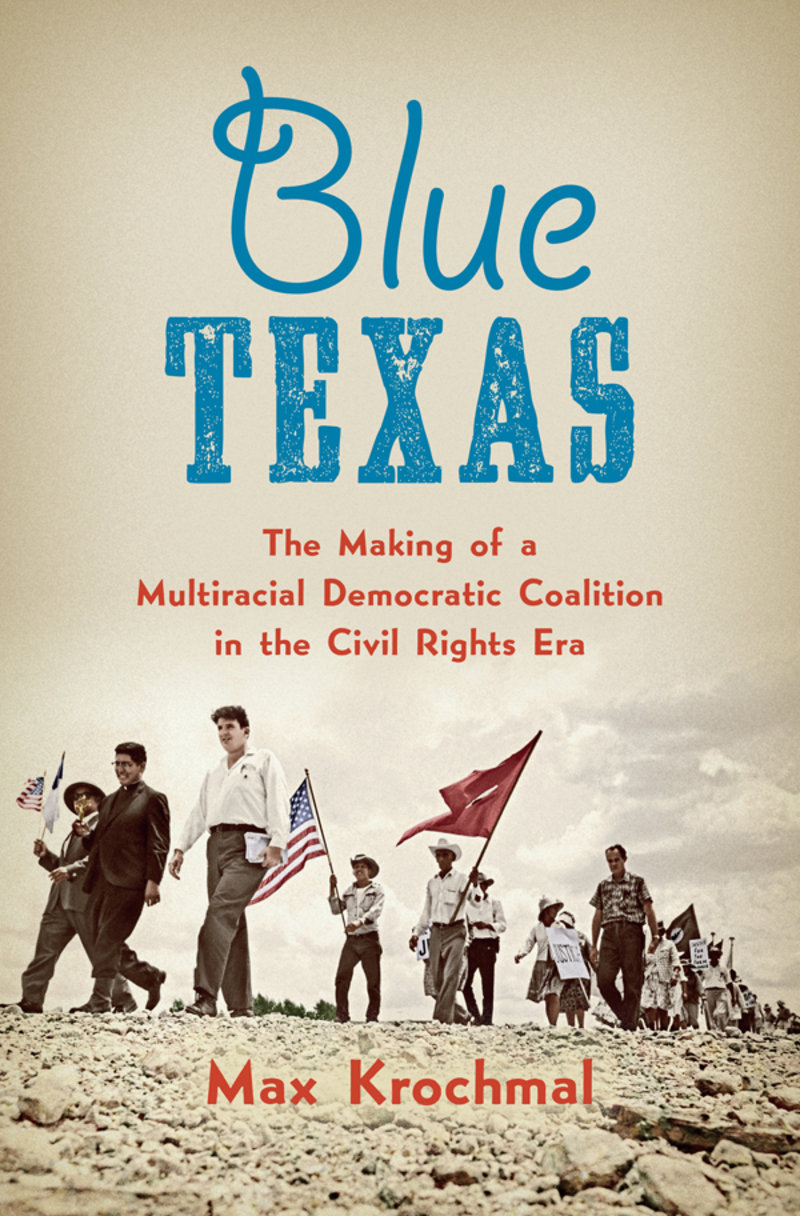Much has been made over the past few years about the potential shifting of political tides in Texas – from the “sleeping giant” of the Latino vote to Donald Trump’s slimmer-than-usual margin of victory in the presidential race.
Texas remains largely Red, and at times it feels like it’s always been that way. But progressive undercurrents in a state known for “cowboy conservatism” are not a new phenomenon.
When we think about the Civil Rights era, Texas probably isn’t the first place that comes to mind as any sort of epicenter for the movement. But activists around the state were organizing for equality across racial lines.
Max Krochmal explores this side of the state’s history in his new book, “Blue Texas: The Making of a Multi-racial Democratic Coalition in the Civil Rights Era“.
“There was a robust civil rights movement among African Americans in Texas and also a separate civil rights struggle among Latinos, among Mexican Americans in the state,” Krochmal says. “Those struggles had their own agendas and their own tactics and their own priorities. But they often intersected and overlapped and even did come together briefly.”
Beginning in the 1930s, Black, brown and white activists experimented in building alliances with each other, Krochmal says. By the 60s there was a vibrant multiracial liberal alliance committed to electoral politics and organizing in the streets.
“African Americans, in particular, were pushing for integration … but also much more it was a more expansive set of demands,” Krochmal says. “They were interested in fostering economic opportunities and the fight for … quality jobs, housing infrastructure and they were also very interested in independent political representation.”
Simultaneously, Mexican Americans were rallying around John F. Kennedy’s presidential campaign.
“They also are fighting for independent political power – free from the old bosses of south Texas lore, free from the urban leaders that wanted to co-opt their votes,” Krochmal says. “They’re pushing for economic justice for better jobs for improvements in the state’s barrios.”
The two movements had overlapping social justice interests, so they began to combine their efforts within the state.
“But what really brings African Americans and Mexican Americans together, along with white liberal and labor activists, is realizing that they need each other,” Krochmal says. “Not so much that they had it there from the beginning, but that they were desperate in their own struggles. They faced often intra-ethnic opposition from members of their own racial groups and so they came together as a strategy for building power together.”
During the 60s Texas was a blue state – part of a solid democratic south. But it wasn’t without conflict.
“There was a war happening between liberals of all colors in the Democratic party and conservatives who tended to support segregation who were allied closely with some of the state’s major business interests,” Krochmal says. “The various activist groups would cohere at different moments and in different styles in order to fight that broader fight.”
Today, Texas could be turning purple. Krochmal says we can look to the civil rights movement in the past to inform the future.
“The Democratic party today could learn a lot from this history in terms of allying what’s happening in high politics with the on-the-ground organizing that’s taking place already in some of the communities that the democratic party wants to reach.”
Post by Beth Cortez-Neavel.


















